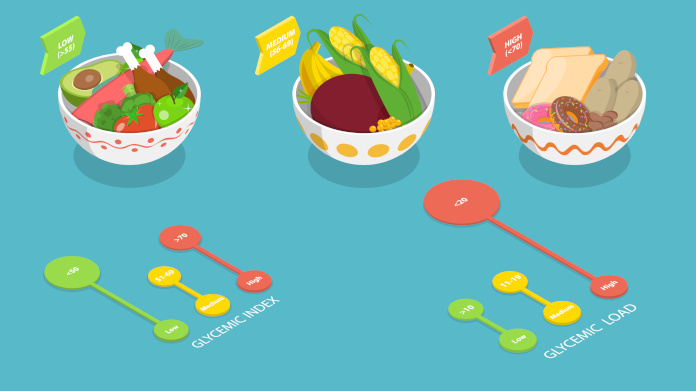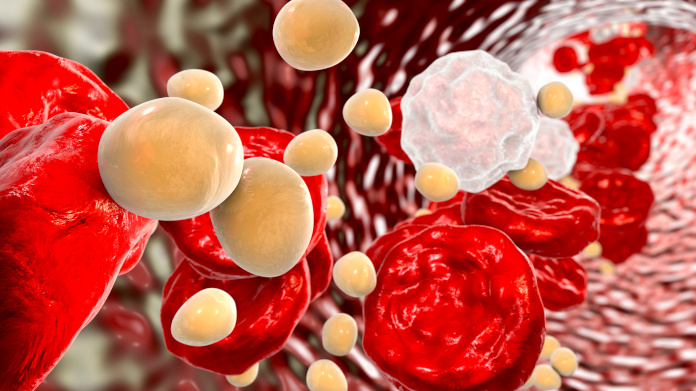
Everything you need to know about good and bad cholesterol!
Some explanation is needed then to clarify exactly what is meant by cholesterol, hypercholesterolaemia, ‘good’ and ‘bad’ cholesterol and a cholesterol-lowering diet.
What exactly is cholesterol?
Before we get onto the difference between ‘good’ and ‘bad’ cholesterol, it’s worth restating the definition of cholesterol. As its name suggests, it is a sterol! In other words, cholesterol is a lipid, a macronutrient which the body needs to ensure certain essential functions. For example, cholesterol forms part of the composition of cell membranes, it is involved in synthesising bile salts essential for lipid digestion and it acts as a precursor in the production of several molecules. In particular, cholesterol plays a part in the synthesis of vitamins and hormones: vitamin D, cortisol, progesterone, male reproductive hormone …
What is hypercholesterolaemia?
While cholesterol is essential for a number of the body’s functions, excessive levels present risks to health. This is what specialists term hypercholesterolaemia, a metabolic disorder and one of the leading risk factors for cardiovascular disease. In excess, cholesterol accumulates on artery walls leading to the formation of fatty plaques called atheroma. Known as atherosclerosis, this generally manifests in hypertension and can result in serious health complications including stroke and heart attack …
How are ‘good’ and ‘bad cholesterol defined?
You’ve no doubt heard of ‘good fats’ and ‘bad fats’, which are distinguished by their chemical structure. You might imagine that it’s the same for ‘good’ cholesterol and ‘bad’ cholesterol, yet the difference between them is of quite a different order. Contrary to common perception, they are in fact two transporters of cholesterol. Biochemically, they are described as lipoproteins – complexes of lipids and proteins which enable fats to be transported in the bloodstream. ‘Good’ cholesterol refers to high-density lipoprotein or HDL-cholesterol, while ‘bad’ cholesterol corresponds to low-density lipoprotein or LDL-cholesterol.
Why distinguish between the two?
Specialists advise us to distinguish between ‘good’ and ‘bad’ cholesterol as the latter promotes the accumulation of cholesterol in the blood, while the former enables it to be broken down in the liver. LDL-cholesterol is thus termed ‘bad’ because it transports cholesterol towards the body’s tissues, while HDL-cholesterol is ‘good’ because it carries it towards the liver where it is eliminated. A high level of ‘bad’ cholesterol is often symptomatic of a diet that’s too high in cholesterol, hypercholesterolaemia and increased risk of cardiovascular disease.
What is a cholesterol-lowering diet?
In the case of hypercholesterolaemia, doctors generally recommend adopting a cholesterol-lowering diet to reduce the risk of health problems. The top 10 anti-cholesterol foods include fish high in omega-3 fatty acids, pulses, and antioxidant-rich fruit and vegetables. In recent years, scientific research has also identified other natural anti-cholesterol products. Among them are red yeast rice, a traditional product from the Chinese pharmacopoeia which can lower levels of ‘bad’ cholesterol, and policosanol, a compound extracted from sugar cane which reduces total cholesterol levels via different mechanisms. Scientific research on ‘good’ and ‘bad’ cholesterol has also led to the formulation of Sytrinol™, a natural anti-cholesterol supplement the efficacy of which has been recognized by a number of clinical studies.
Keywords
12
Great Product ...........
Great Product ............ Fast Service. Thanks Supersmart.
SCOTT Mark
1 Days
Good price & waiting to find out how beneficial the product is.
At this time I can not comment on any medical value of my purchase. I have no medical issues I'm treating so I will have to wait until my next blood test some months away to see just what benefit this product has given me.
El Capt
1 Days
Quality Products
Fast shipping and quality supplements - some that are hard to find. Great selection on the website and usually have discounts.
WadeS
5 Days
Customer service is impeccable
Customer service is impeccable, shipping is almost immediate and best of all quality of products are second to non!
Mohamad Hussein
5 Days
Great fast service.
Great fast service.
Wai Kuen Lee
7 Days
Good service, fast delivery.
I received my order in just a few days. Great service, considering it was sent via USPS!
ABERT Ronald
7 Days
Great quality I noticed the vitamin B1…
Great quality I noticed the vitamin B1 and the Magnesium Complex helps my nerves and helps me go to the bathroom easier
MMA TUBE
9 Days
I'm so glad I found this site!
The ordering experience was a breeze. My choice in the products were mainly of their description which fit very close to what I was looking for. Since I have been using the supplements for a few months now, there is a big difference in the way I feel. I am much more focus. Thank you for providing good quality products that works!
Honyee
11 Days
Very effective high-quality
These are very effective high-quality products. I can feel the difference.
Julee
11 Days
Arrived on time
My product arrived on time and was packaged professionally.
LAURIE CALLAHAN
11 Days
The best
Outstanding products and service
jaygol
12 Days
Best products around
I really love the products here they’re good quality and they work great customer services. Awesome. I highly recommend these products that they have online.
James Freeland
14 Days
Good
My experience was good and I am happy.
LEE Greg
14 Days
The site is easy to navigate and I can…
The site is easy to navigate and I can find everything I need in just a few clicks. On top of it, I trust the formulations and high quality of everything SuperSmart offers.
Oliver Vanacore
15 Days
I love supersmart supplements
I love supersmart supplements! They are very innovative with their products!
MCDOUGAL Brad



